Rain creates a symphony of its own in nature, but how does it influence the avian musicians who share that acoustic space? The relationship between precipitation and bird calls represents a fascinating intersection of biology, acoustics, and behavioral adaptation. From common backyard songbirds to specialized tropical species, birds must navigate the challenges that rainy conditions present to their primary communication system. This article explores the complex and often surprising ways that rainfall influences when, how, and why birds vocalize, revealing adaptations that have evolved over millennia to ensure birds can effectively communicate even when the skies open up.
The Acoustic Challenges of Rainfall
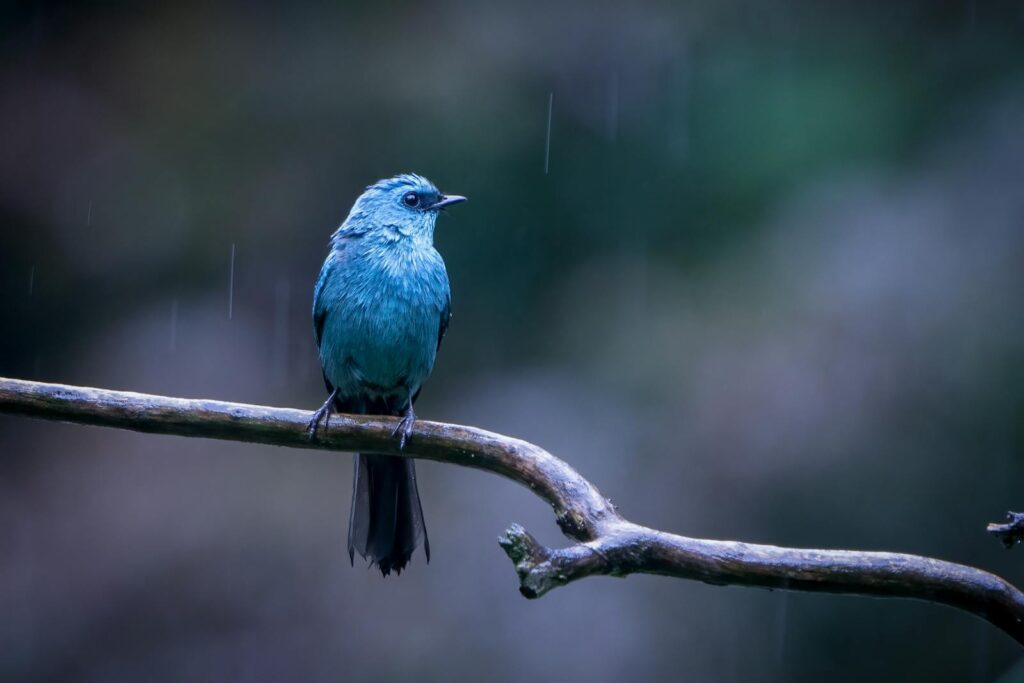
Rain creates substantial acoustic interference that directly impacts bird communication. Each raindrop generates noise upon impact with surfaces like leaves, ground, or water, creating a continuous ambient sound that can mask or distort bird calls. This “acoustic masking” becomes more severe as rainfall intensity increases, effectively reducing the distance over which birds can hear each other. For species that rely on subtle acoustic features in their calls for species recognition or mate assessment, even light rainfall can significantly degrade signal quality. Birds face a fundamental communication dilemma during precipitation: increase call volume (requiring more energy), change call characteristics, postpone communication, or risk failed message transmission.
Reduced Overall Vocalization During Rain
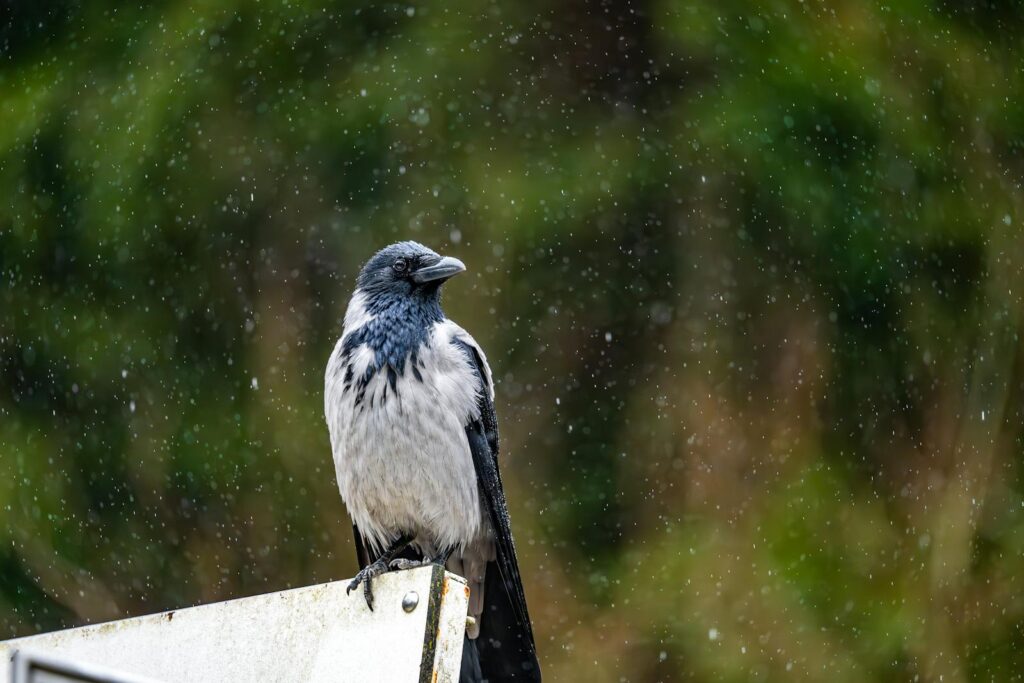
Research consistently shows that most bird species demonstrate reduced calling rates during active precipitation. This suppression effect is particularly pronounced during heavy rainfall, where studies have documented vocalization reductions of up to 80% compared to clear conditions. The energy cost of producing louder calls to overcome rain noise often exceeds the potential benefits, leading many species to simply wait out the weather. Dawn chorus, that peak period of morning bird song, may be delayed entirely or significantly diminished during rainy dawns. Interestingly, this reduced vocalization pattern appears consistent across diverse habitats from temperate forests to tropical rainforests, suggesting a fundamental acoustic constraint rather than a habitat-specific adaptation.
Species-Specific Responses to Rainfall
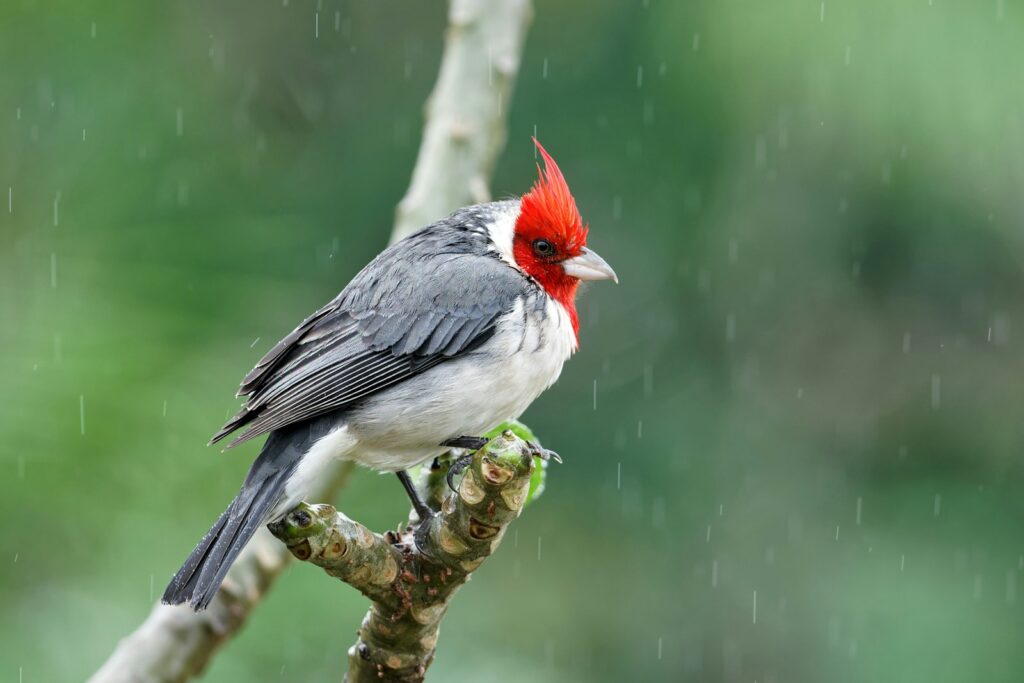
Despite the general trend toward vocalization reduction, bird species show remarkable variation in their rain response strategies. Some species like the American Robin (Turdus migratorius) and European Blackbird (Turdus merula) may sing actively during light rain but fall silent during heavier precipitation. Water-associated species such as certain ducks and wading birds often continue vocalizing through moderate rainfall, suggesting possible adaptations to consistently wet acoustic environments. Some tropical species that evolved in rainforest environments with frequent precipitation show less vocalization reduction during rain than temperate species. Perhaps most fascinating are certain warblers and thrushes that have been documented increasing their song output immediately following rainfall, potentially capitalizing on the post-rain acoustic clarity and increased insect activity.
Call Modification Strategies
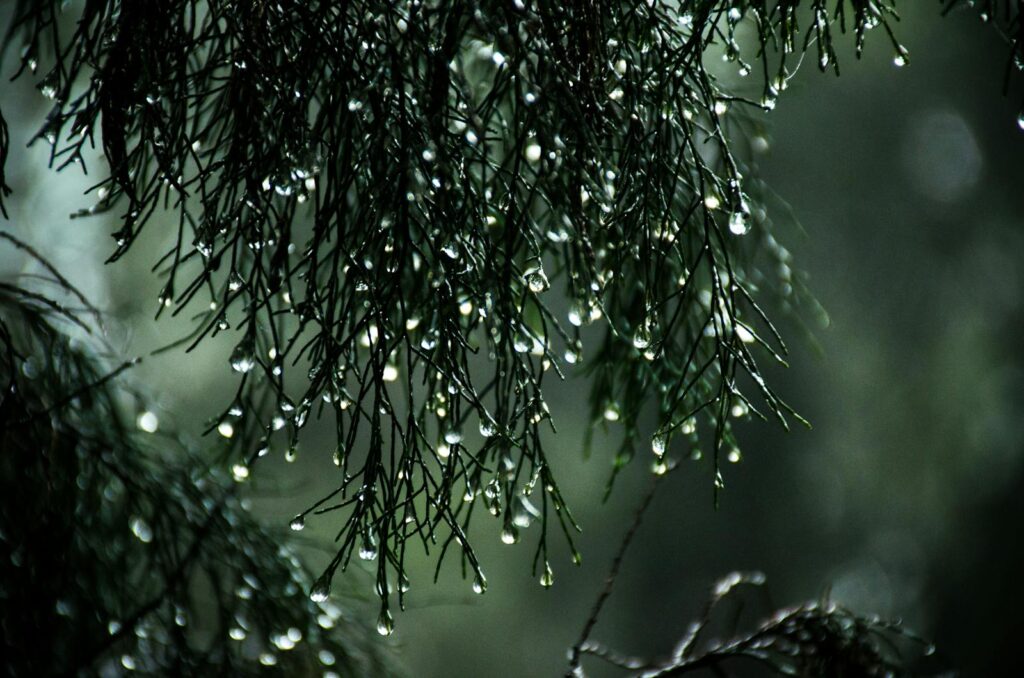
Birds that continue vocalizing during rain often modify their calls to improve transmission through the noisy environment. Common adaptations include shifting to lower-frequency sounds that travel better through rain noise, which typically occupies higher frequency bands. Some species increase the repetition of call elements or extend note duration to improve the chances of the signal being detected through the acoustic interference. Volume adjustments are another key adaptation, with some birds producing louder calls during light to moderate rain, though this strategy becomes energetically unsustainable during heavy downpours. Researchers have also documented birds simplifying complex songs during rainfall, focusing on the most distinctive elements that might cut through the ambient noise.
The Pre-Rain Vocalization Phenomenon

One of the most intriguing patterns observed by both researchers and birdwatchers is the increase in vocalization that often occurs immediately before rainfall begins. This pre-rain chorus appears particularly common in species with barometric sensitivity, suggesting birds can detect approaching pressure changes associated with storm systems. Some ornithologists hypothesize this represents an adaptive strategy to communicate important messages before the upcoming acoustic interference. Others suggest it may relate to insect activity changes before rain, prompting increased foraging-related calls. Barometric pressure drops that precede precipitation may also directly influence birds’ physiological state and motivation to vocalize, creating what appears to be an anticipatory response to the coming rain.
Post-Rain Acoustic Opportunities

The period immediately following rainfall often triggers a noticeable surge in bird vocalization across many species. This post-rain chorus takes advantage of several favorable acoustic conditions that emerge once precipitation stops. The air typically contains fewer dust particles after rain, allowing sound to travel more efficiently with less scattering. Decreased wind activity that often follows rainfall episodes further reduces ambient noise. Many insects become highly active after rain, triggering foraging-related communications among insectivorous birds. This post-rain vocalization spike represents an excellent example of birds’ behavioral flexibility in response to changing acoustic environments, maximizing communication efficiency when conditions improve.
Seasonal Variations in Rain Response
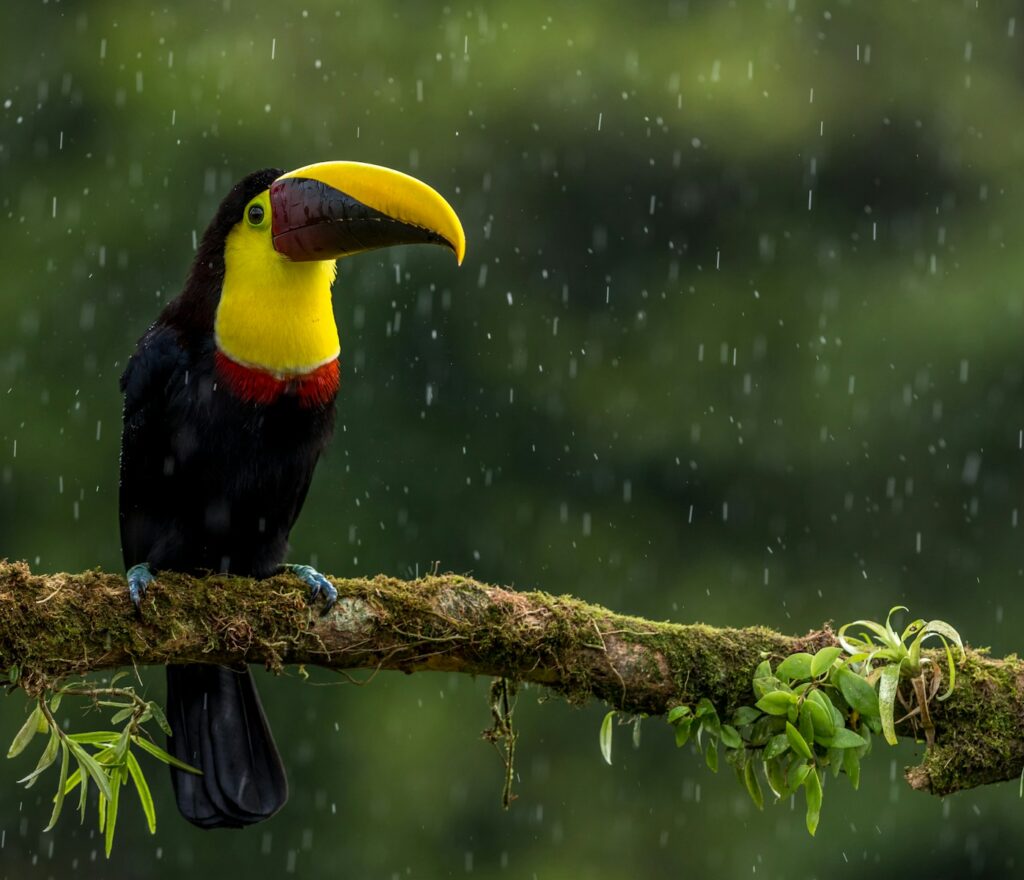
A bird’s response to rain varies significantly depending on the breeding season and migratory status. During peak breeding periods, males of many species show higher tolerance for singing during rainfall, as the imperative to defend territory and attract mates outweighs the energetic costs and reduced effectiveness. Migratory birds often exhibit different rain-response patterns during passage compared to their breeding grounds, generally reducing vocalization more during migration when conservation of energy reserves is critical. Seasonally-breeding species in tropical environments frequently adjust their peak singing times to align with predictable daily or seasonal patterns of rainfall, minimizing acoustic interference. Long-term studies suggest many species have evolved finely-tuned seasonal vocalization patterns that account for typical precipitation cycles in their habitats.
Rainfall Intensity and Duration Effects
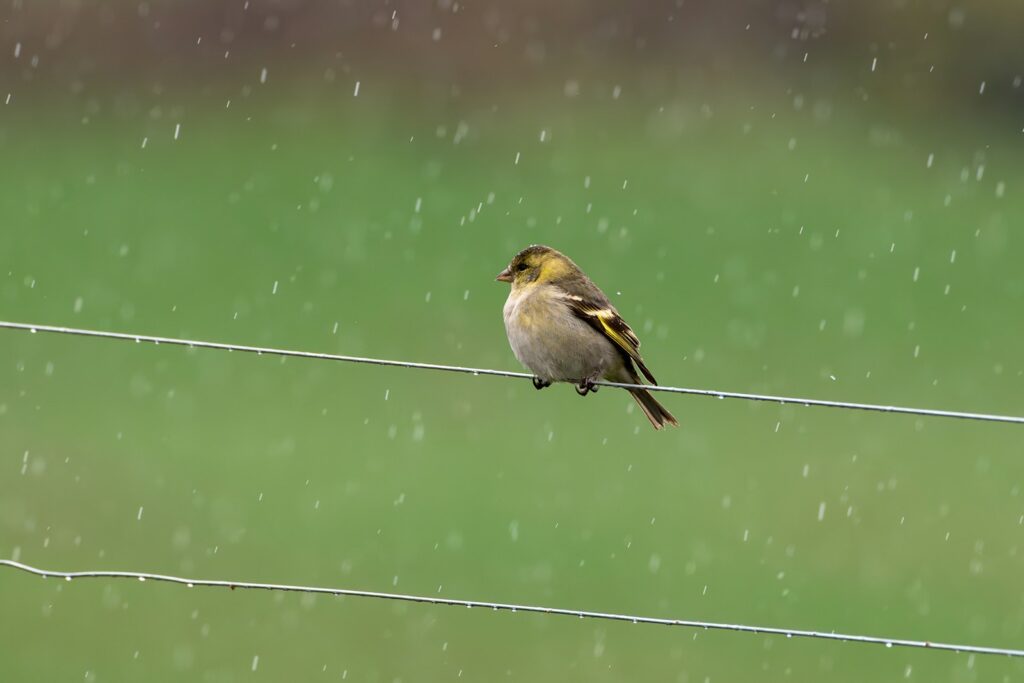
The intensity and duration of rainfall create distinct patterns in bird vocalization responses. Light drizzle typically prompts minimal changes in calling behavior for most species, with some birds continuing normal vocalization patterns with only slight modifications. Moderate steady rain generally triggers substantial decreases in song output across species, with remaining vocalizations often shortened or simplified. Heavy downpours almost universally suppress vocalization across the avian community, with only urgent contact or alarm calls typically persisting. Particularly interesting are birds’ responses to prolonged rainfall events, where some species appear to adapt over time by finding acoustic “windows” between the heaviest periods to deliver essential communications, demonstrating remarkable behavioral flexibility.
Habitat-Specific Adaptations
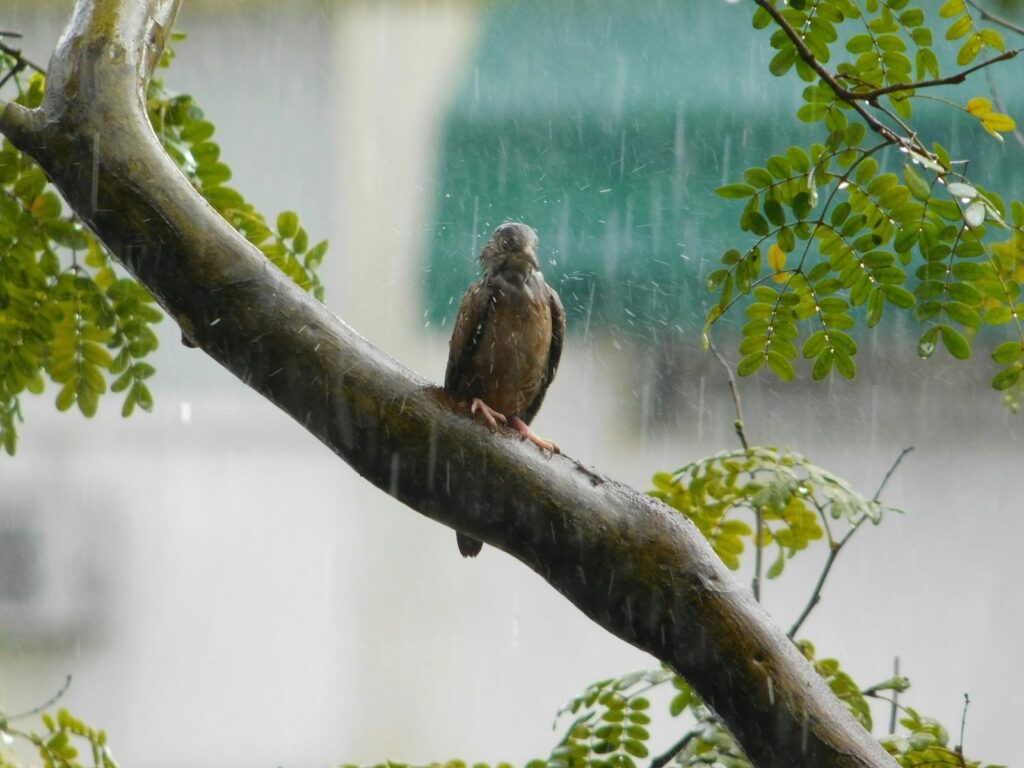
Birds in different habitats show specialized vocalization adaptations to their typical rainfall patterns. Rainforest species often possess calls with acoustic properties specifically evolved to transmit through constant high humidity and frequent precipitation, including lower frequency ranges and distinctive temporal patterning. Open grassland birds typically show more dramatic reductions in calling during rain, likely due to the lack of physical shelter from rainfall and fewer sound-reflecting surfaces to strengthen their signals. Wetland species demonstrate some of the most rain-resistant vocalization patterns, continuing to call through moderate precipitation that would silence their terrestrial counterparts. Urban birds face unique challenges during rain, with research suggesting they modify their calls to overcome both rainfall noise and the amplified sounds of rain on human-made structures.
Rain and Predator-Prey Vocal Dynamics
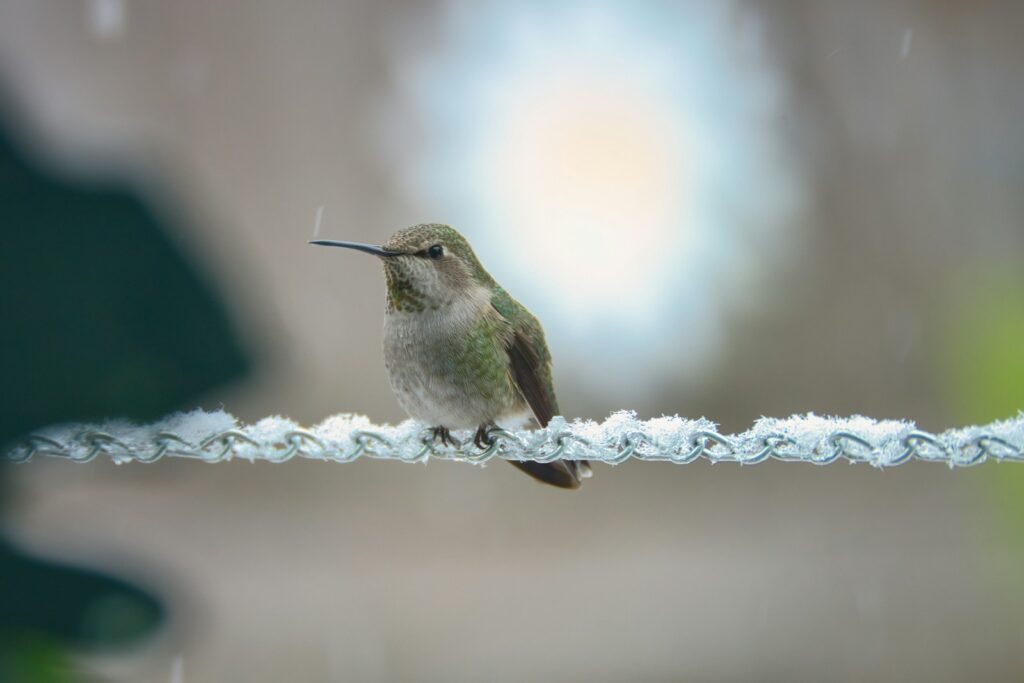
Rainfall creates fascinating shifts in the vocal interplay between predatory birds and their prey. Many small songbirds reduce alarm and contact calls during precipitation, potentially because visual predator detection is already compromised for raptors during rain, reducing immediate predation risk. Owls and other acoustic hunters may face significant challenges locating prey by sound during rainfall, potentially explaining why some small birds resume foraging activities during light rain despite reduced visibility. Some predatory species have developed specialized vocalizations that transmit effectively through rain, maintaining their hunting advantage. The acoustic masking effect of rainfall can create temporary “acoustic refuge” periods where prey species may vocalize with reduced risk of detection, potentially explaining certain specialized calling patterns observed during precipitation.
Technological Insights into Rain and Bird Vocalization
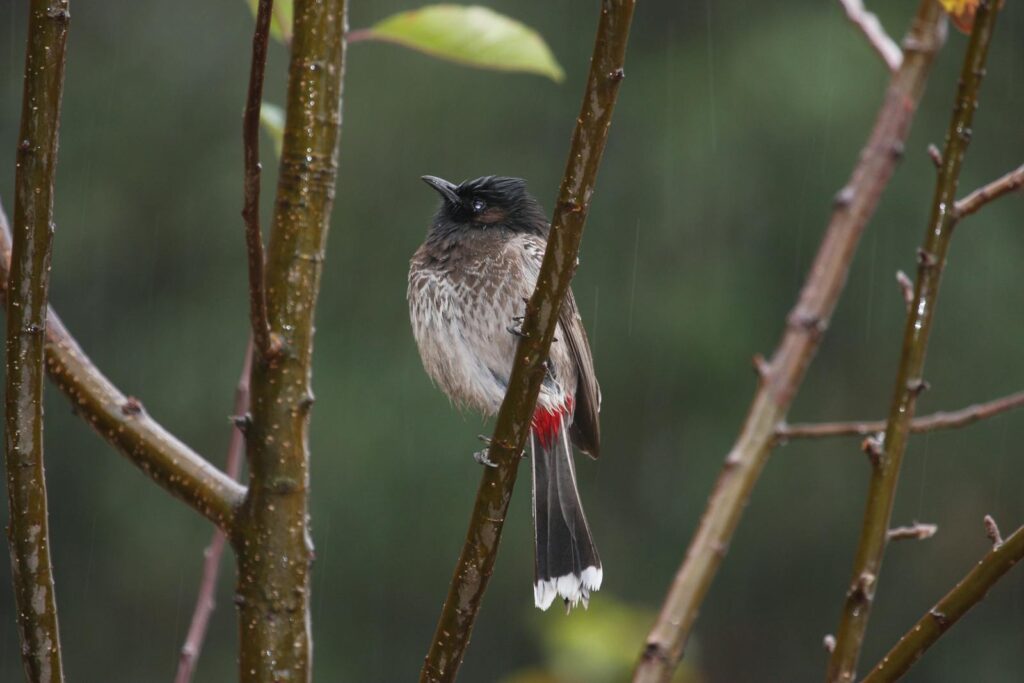
Modern acoustic monitoring technologies have revolutionized our understanding of rain’s impact on bird vocalization. Automated recording units deployed in diverse habitats can capture continuous soundscape data through all weather conditions, revealing patterns impossible to document through traditional field observation. Advanced spectrographic analysis allows researchers to identify subtle call modifications during different rainfall intensities that human ears might miss. Machine learning algorithms have begun identifying species-specific rain-response patterns across massive acoustic datasets, revealing behavioral adaptations previously unknown. These technological approaches have demonstrated that bird communities show synchronized responses to rainfall events, with distinct temporal shifts in the acoustic niche that different species occupy as precipitation begins and ends.
Climate Change Implications for Rain-Vocalization Dynamics
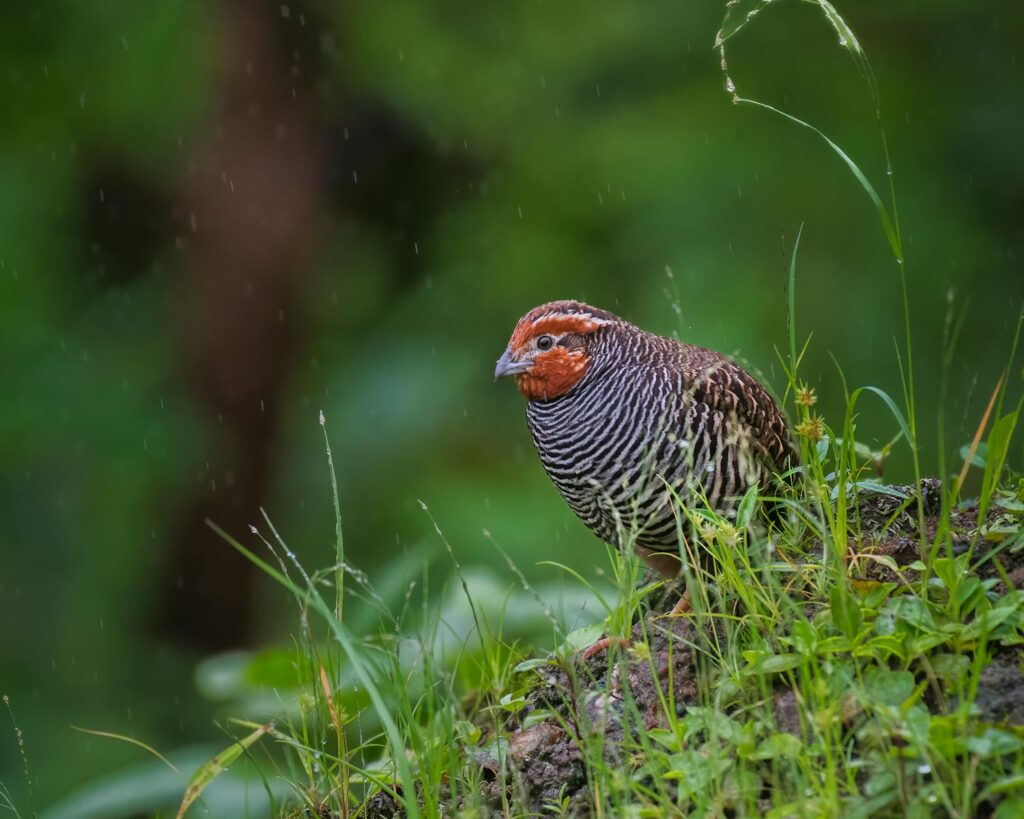
Shifting precipitation patterns due to climate change present new challenges for bird communication systems evolved under historical rainfall regimes. Regions experiencing increased rainfall intensity may see greater communication disruption for species without adaptations for vocalizing through heavy precipitation. Areas facing extended drought could see unusual vocal behavior as birds adapted to regular rainfall patterns must communicate in unexpectedly dry conditions. Migration timing mismatches with seasonal rainfall patterns may create situations where birds must vocalize in suboptimal acoustic conditions during critical breeding periods. Research suggests that species with more flexible vocalization strategies and broader acoustic adaptability will likely navigate these changing precipitation patterns more successfully than acoustic specialists.
The Future of Rain-Vocalization Research
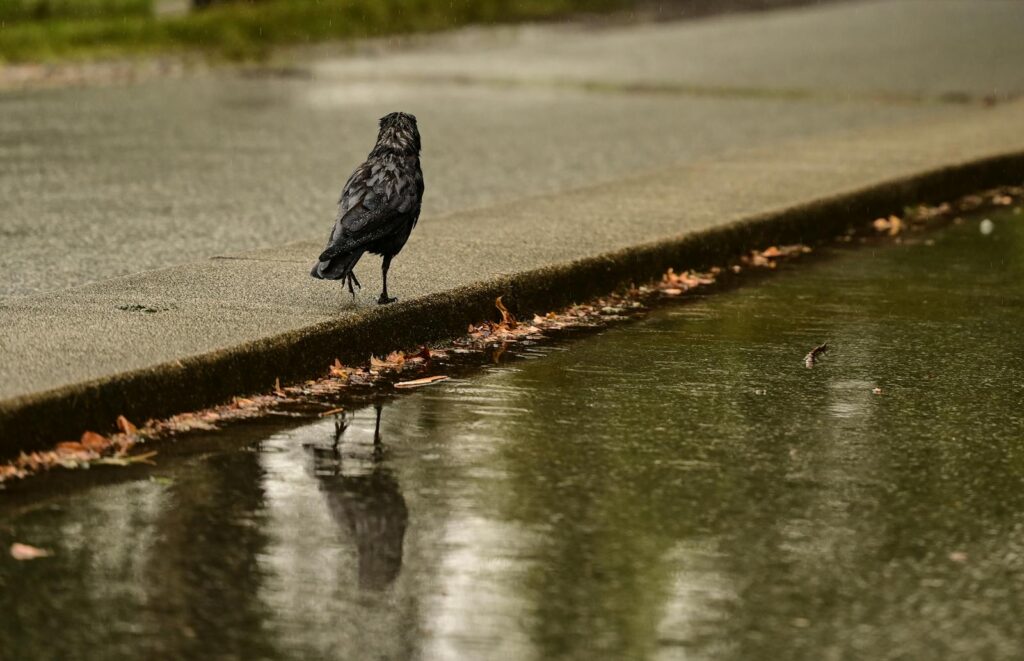
The intersection of rainfall and bird vocalization remains a vibrant area for ongoing and future research. Emerging bioacoustic techniques promise deeper insights into how individual birds modify their calls in real-time as precipitation begins and ends. Long-term monitoring studies across diverse habitats will help clarify how climate-driven changes in precipitation patterns might reshape avian communication systems. Comparative studies examining closely-related species in different rainfall regimes may reveal evolutionary adaptations and constraints in rain-response vocal behaviors. Perhaps most exciting is the potential for soundscape ecology approaches that examine how entire acoustic communities—not just birds, but insects, amphibians, and mammals—collectively respond to and recover from rainfall events, revealing the complex acoustic dynamics of natural systems.
The relationship between rainfall and bird vocalization represents a remarkable example of behavioral adaptation to acoustic challenges in nature. While rain generally suppresses bird vocal activity through its masking effect, the specific responses vary widely based on species, habitat, season, and precipitation characteristics. Birds have evolved diverse strategies to communicate effectively despite rainfall, from call modifications and timing adjustments to sophisticated pre- and post-rain behaviors that maximize acoustic efficiency. As climate change alters precipitation patterns globally, these adaptations may face new tests, potentially reshaping the soundscapes of ecosystems worldwide. For birdwatchers and researchers alike, understanding these rain-vocalization dynamics adds another dimension to appreciating the remarkable complexity of avian communication systems that have evolved to function across all weather conditions.
